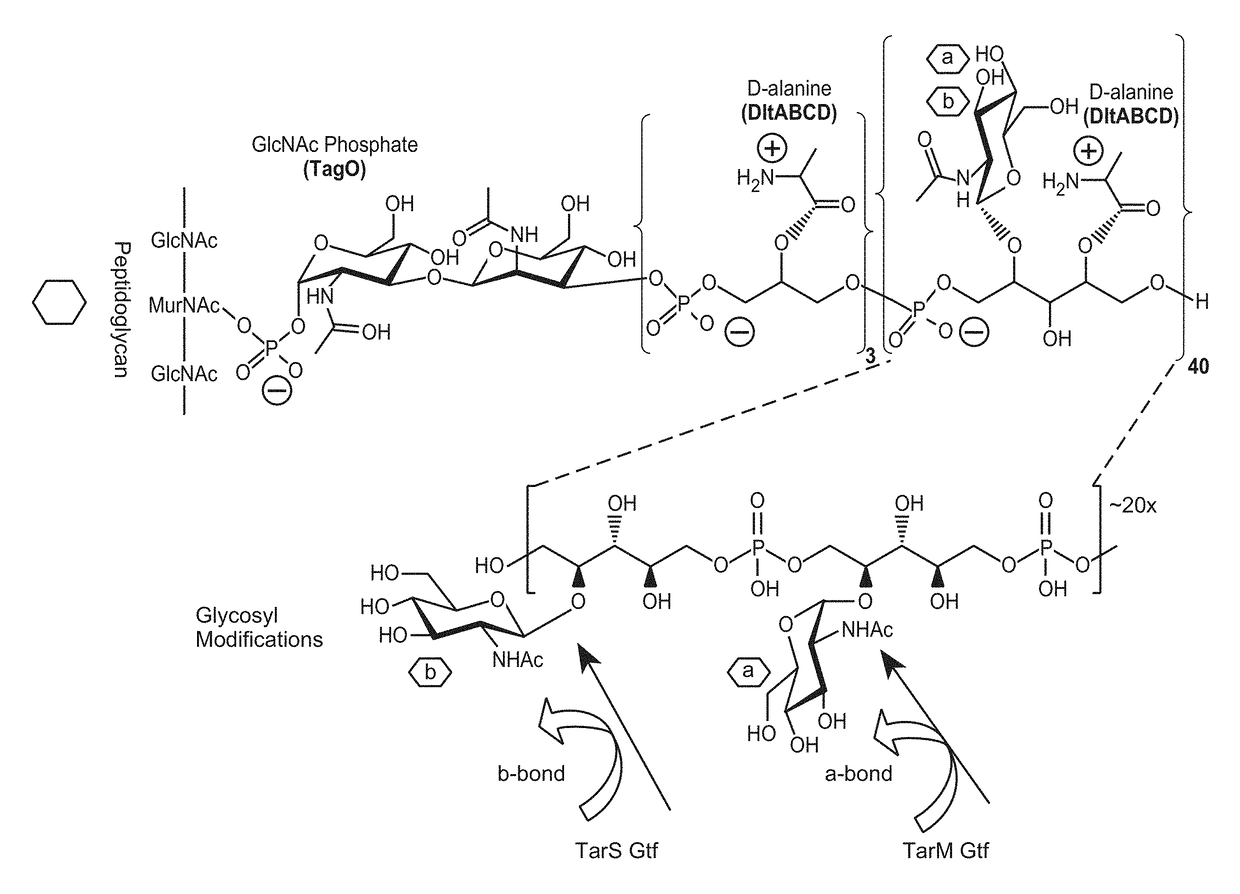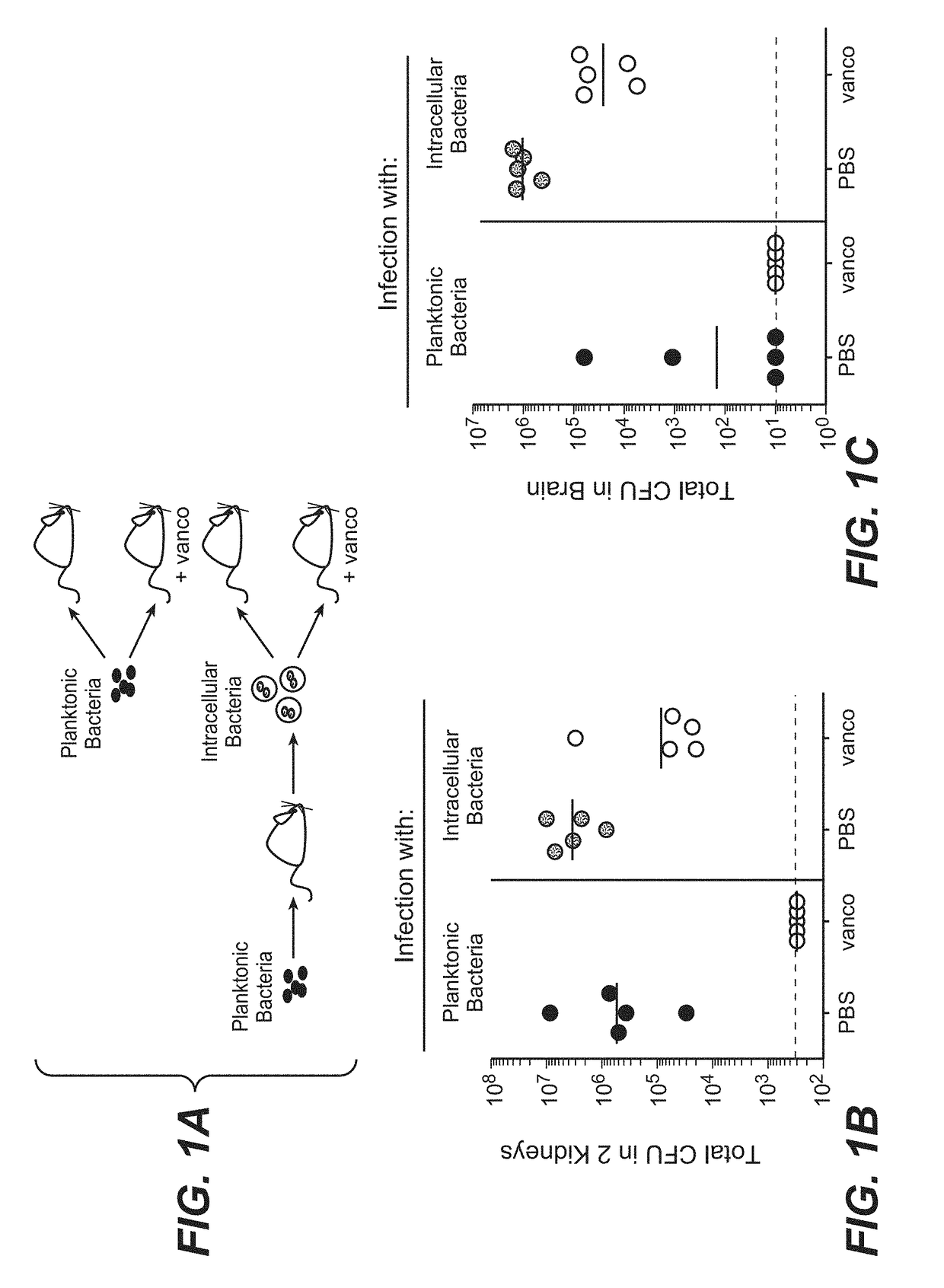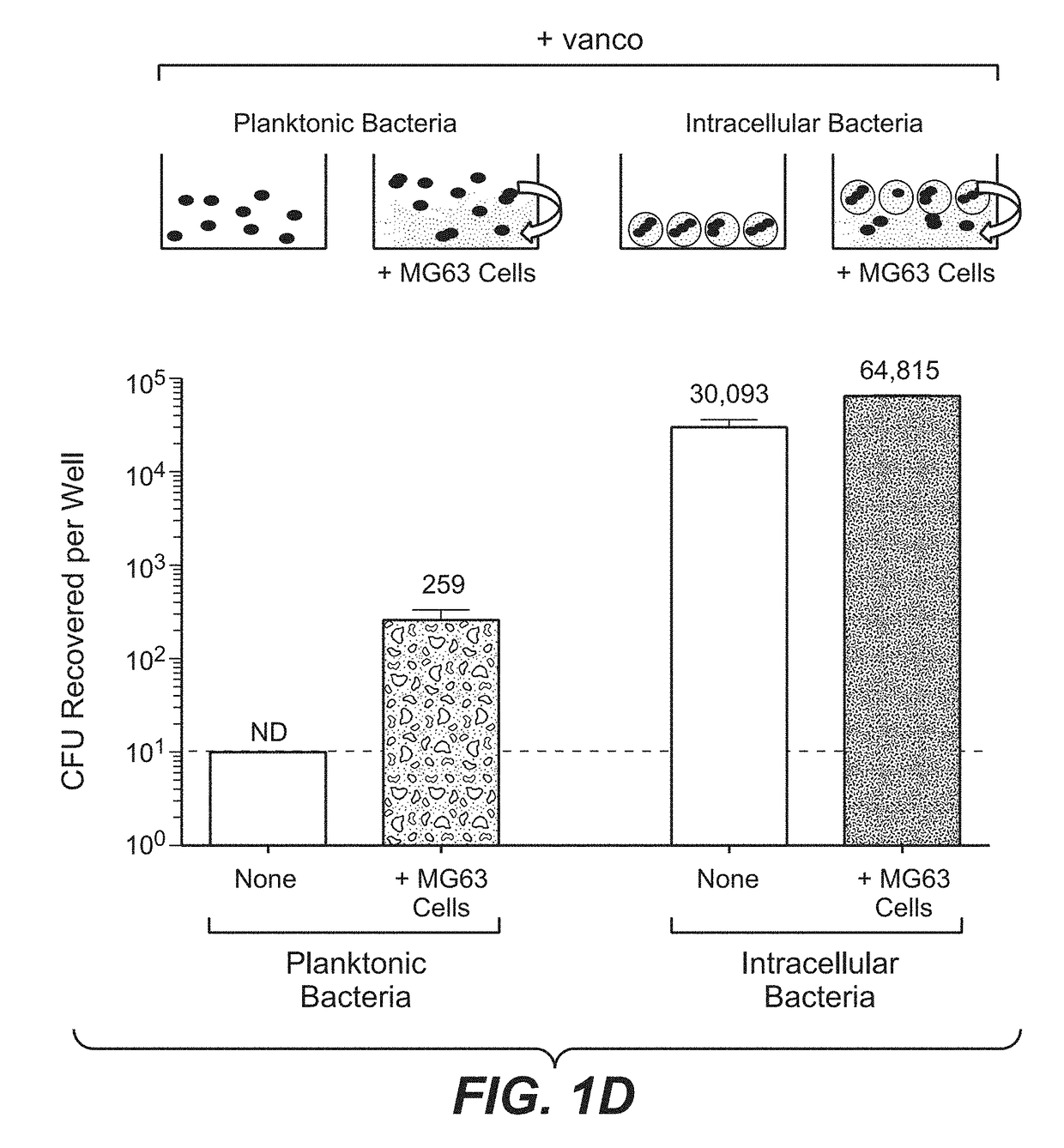Anti-staphylococcus aureus antibody rifamycin conjugates and uses thereof
a technology of anti-staphylococcus aureus and conjugates, which is applied in the field of anti-staphylococcus aureus antibody rifamycin conjugates, can solve the problems of presenting a major health problem, invasive mrsa infections are difficult to treat, and s. aureus infection has become increasingly difficult to trea
- Summary
- Abstract
- Description
- Claims
- Application Information
AI Technical Summary
Benefits of technology
Problems solved by technology
Method used
Image
Examples
example 1
ular MRSA are Protected from Conventional Antibiotics
[0387]To confirm the hypothesis that mammalian cells provide a protective niche for S. aureus in the presence of antibiotic therapy, the efficacy was compared of three major antibiotics that are currently used as standard of care (SOC) for invasive MRSA infections (vancomycin, daptomycin and linezolid) against extracellular planktonic bacteria versus bacteria sequestered inside murine macrophages (Table 4).
[0388]For extracellular bacteria, MRSA was cultured overnight in Tryptic Soy Broth, and the MIC was determined to be the minimum antibiotic dose that prevented growth. For intracellular bacteria, murine peritoneal macrophages were infected with MRSA and cultured in the presence of gentamycin to kill extracellular bacteria. Test antibiotics were added to the culture medium one day post infection, and the total number of surviving intracellular bacteria was determined 24 hours later. The expected serum concentrations for clinicall...
example 2
tion of Infection with Intracellular MRSA
[0390]These experiments compared the virulence of intracellular bacteria versus an equivalent dose of free-living planktonic bacteria, and determined whether the intracellular bacteria are able to establish infection in the presence of vancomycin in vivo. Four cohorts of mice were infected by intravenous injection with roughly equivalent doses of S. aureus viable free bacteria (2.9×106) taken directly from broth culture or intracellular bacteria (1.8×106) sequestered inside host macrophages and neutrophils that were generated by peritoneal infection of donor mice (FIG. 1A) and selected groups were treated with vancomycin immediately after infection and then once per day. Mice were examined 4 days after infection for bacterial colonization in the kidney, an organ that is consistently colonized by S. aureus in mice. In three independent experiments, equivalent or higher bacterial burdens in the kidneys of mice infected with intracellular bacter...
example 4
ization of Antibodies with Specificity Against Wall Teichoic Acids Confirming WTA Specificity of Abs
[0407]Cell wall preparations (CWP) from a S. aureus wild-type (WT) strain and a S. aureus mutant strain lacking WTA (ΔTagO; WTA-null strain) were generated by incubating 40 mg of pelleted S. aureus strains with 1 mL of 10 mM Tris-HCl (pH 7.4) supplemented with 30% raffinose, 100 μg / ml of lysostaphin (Cell Sciences, Canton, Mass.), and EDTA-free protease inhibitor cocktail (Roche, Pleasanton, Calif.), for 30 min at 37° C. The lysates were centrifuged at 11,600×g for 5 min, and the supernatants containing cell wall components were collected. For immunoblot analysis, proteins were separated on a 4-12% Tris-glycine gel, and transferred to a nitrocellulose membrane (Invitrogen, Carlsbad, Calif.), followed by blotting with indicated test antibodies against WTA, or with control antibodies against PGN and LTA.
[0408]Immunoblotting shows that the antibodies against WTA bind to WT cell wall prep...
PUM
| Property | Measurement | Unit |
|---|---|---|
| Fraction | aaaaa | aaaaa |
| Current | aaaaa | aaaaa |
| Digital information | aaaaa | aaaaa |
Abstract
Description
Claims
Application Information
 Login to View More
Login to View More - R&D
- Intellectual Property
- Life Sciences
- Materials
- Tech Scout
- Unparalleled Data Quality
- Higher Quality Content
- 60% Fewer Hallucinations
Browse by: Latest US Patents, China's latest patents, Technical Efficacy Thesaurus, Application Domain, Technology Topic, Popular Technical Reports.
© 2025 PatSnap. All rights reserved.Legal|Privacy policy|Modern Slavery Act Transparency Statement|Sitemap|About US| Contact US: help@patsnap.com



